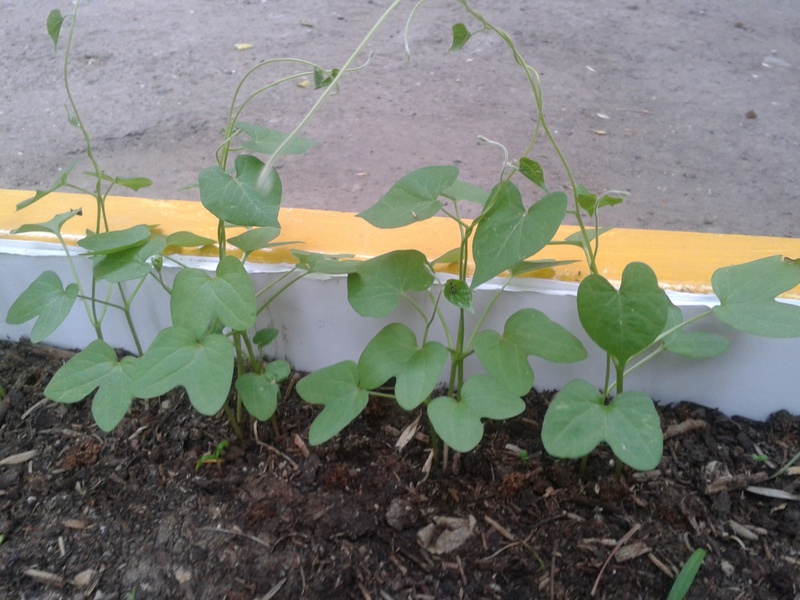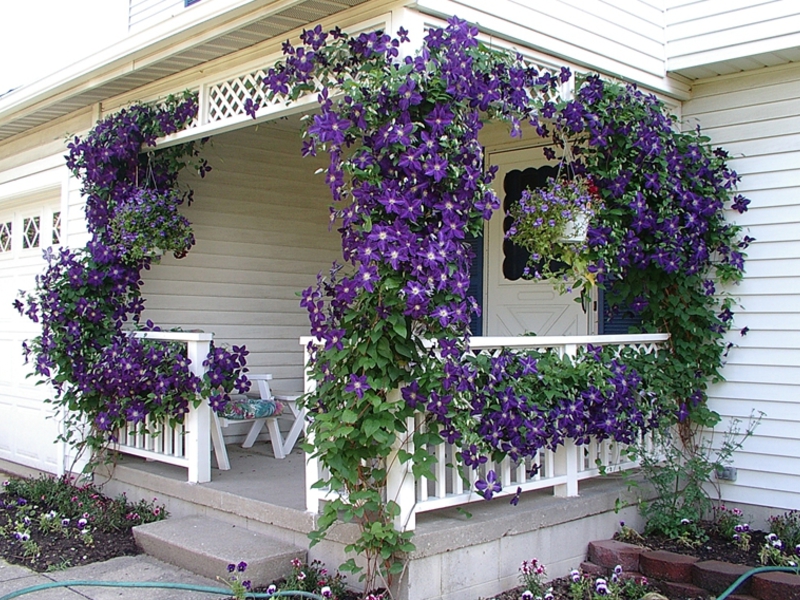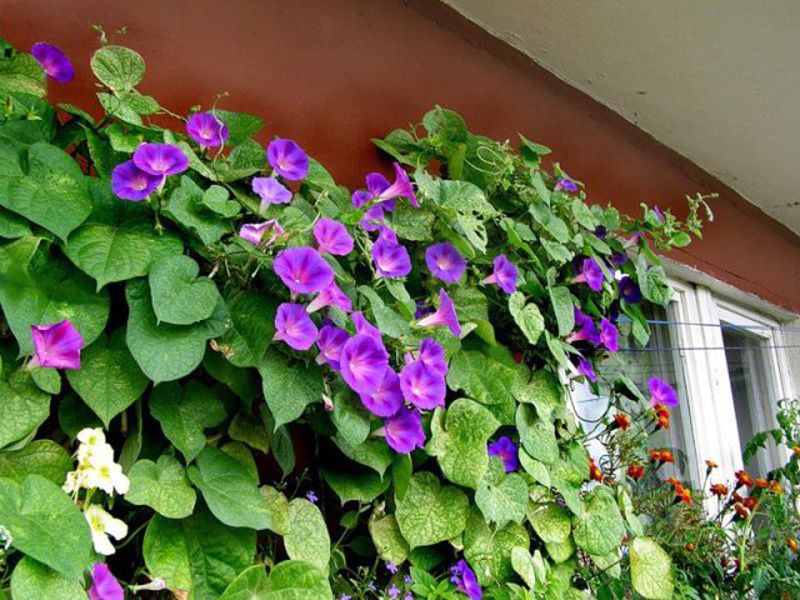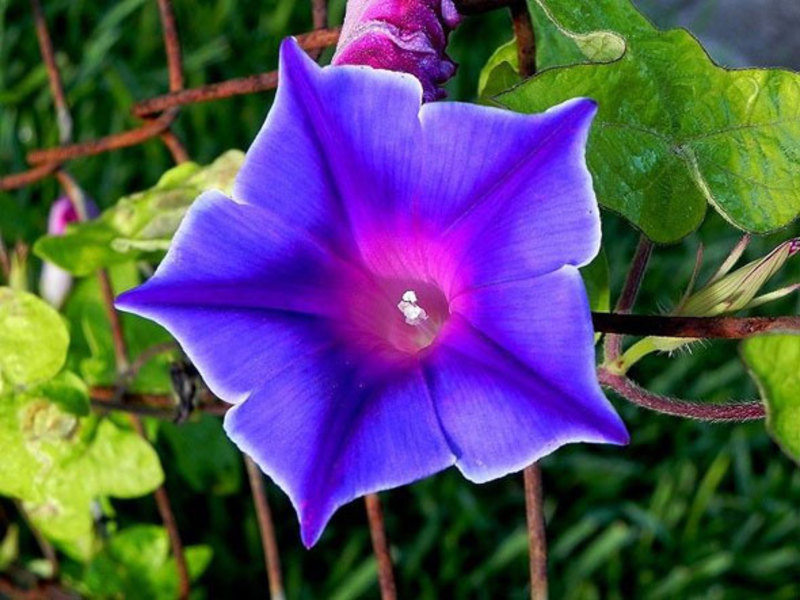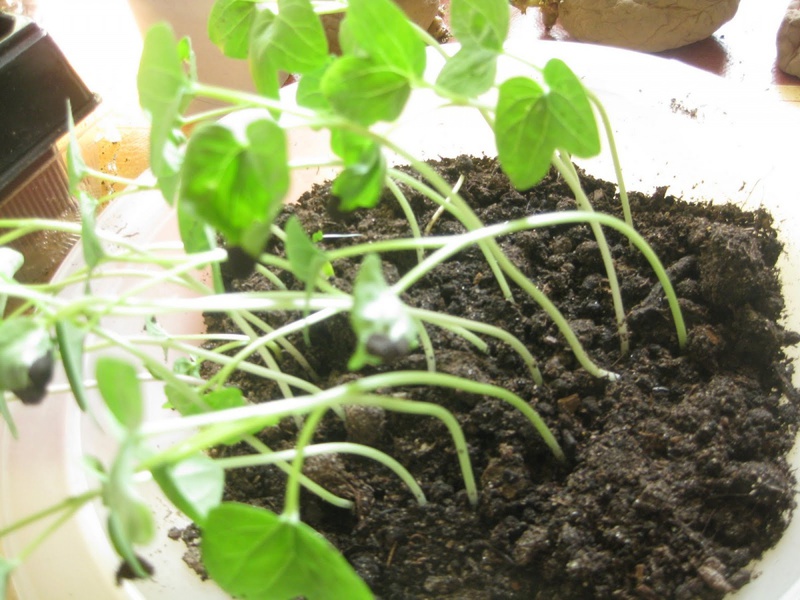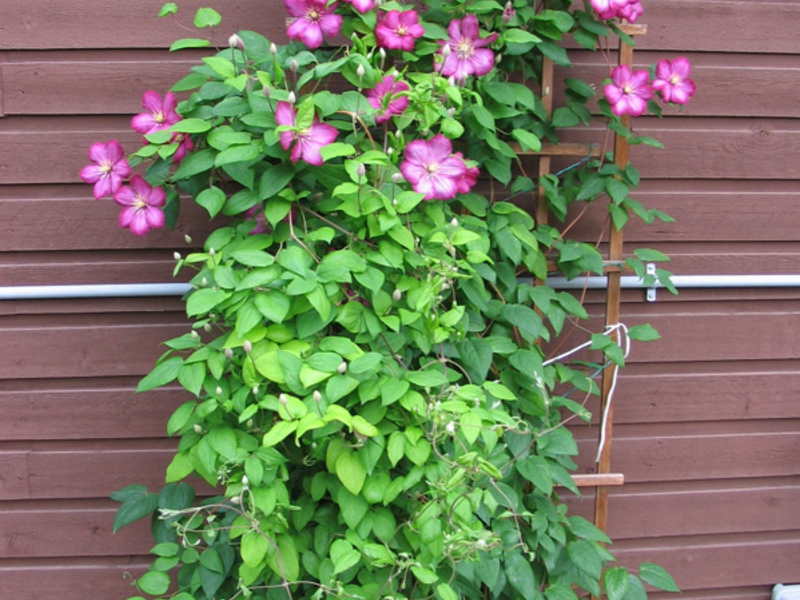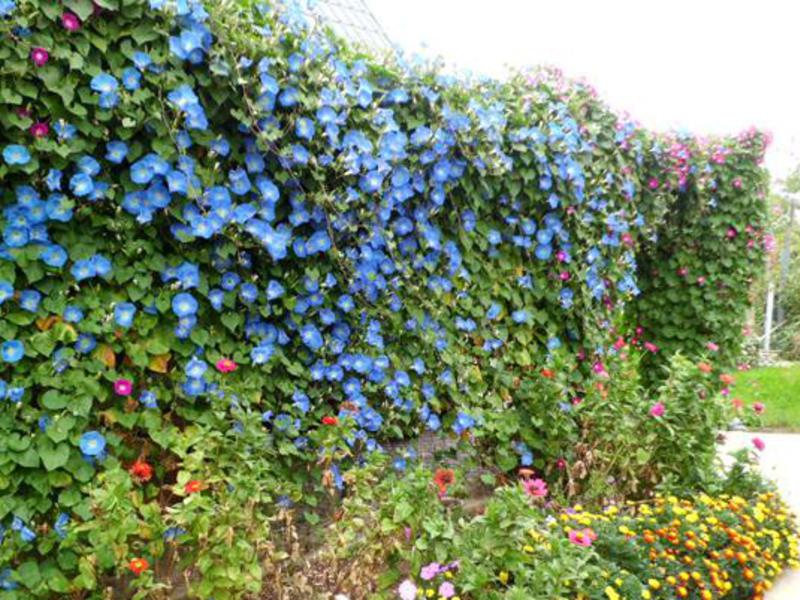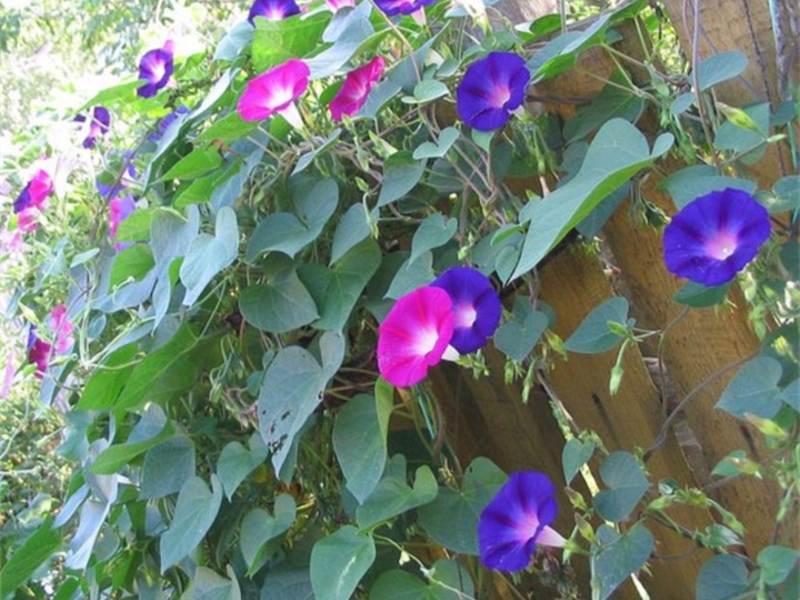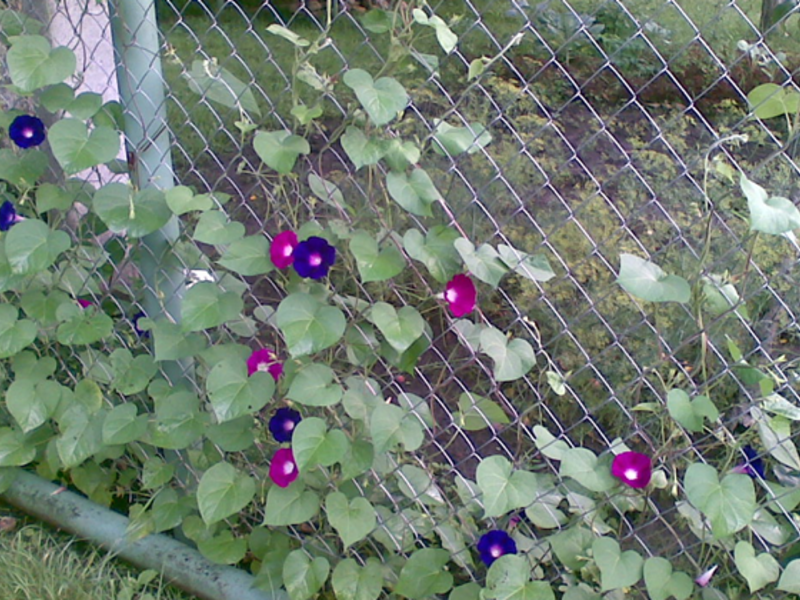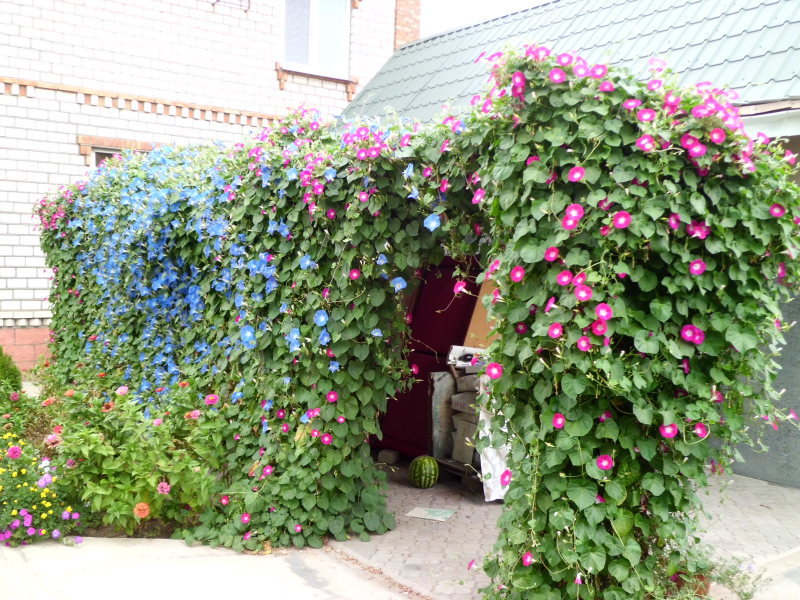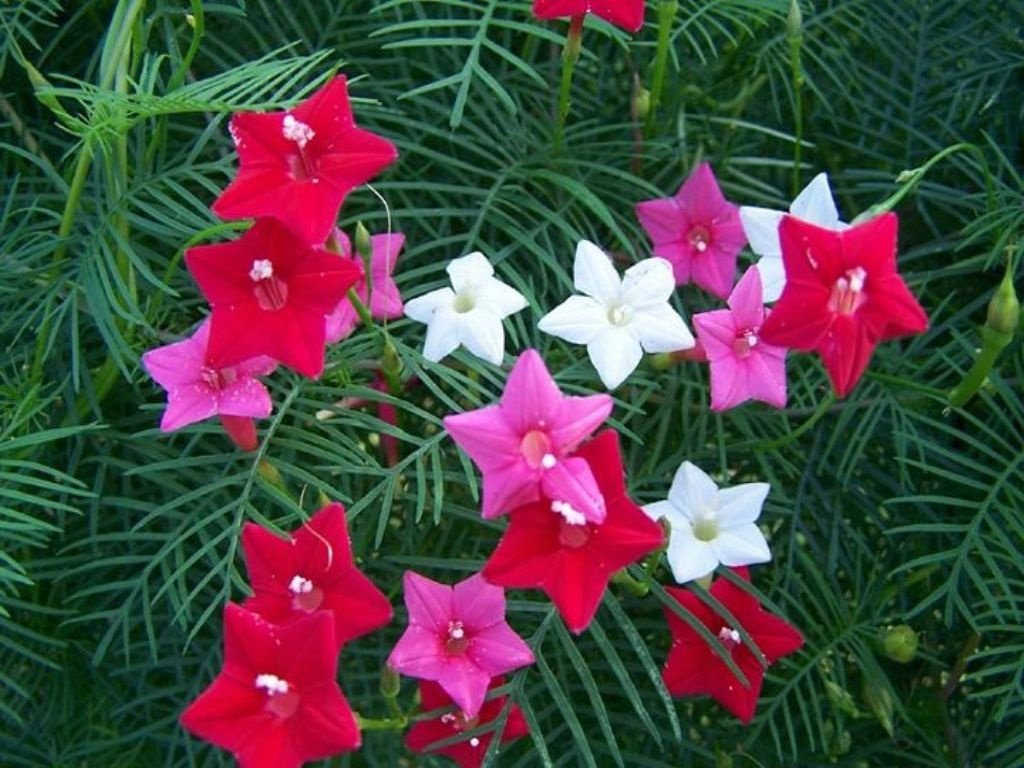Seeing a blooming morning glory, it is difficult to pass by it, because this plant stands out with its inexpressible charm. Every owner of a summer cottage can enjoy this beauty. The main thing is to get acquainted with the peculiarities of growing and care in the open field.
Ipomoea is one of the brightest representatives of the bindweed family. It includes over 500 species that show extremely rapid growth. Unlike many other plants, morning glory begins to bloom in July, delighting the summer resident with its flowers until October.
Content
Description: varieties and varieties of morning glory
The native land of the plant is South America: in the conditions characteristic of this region, it grown as a perennial... In our country, morning glory is cultivated as an annual plant. Due to the large species diversity of morning glory, you can easily find a plant that can perfectly fit into the landscape of the site of each summer resident.
Ipomoea varieties available today for cultivation can be propagated by underground tubers. This primarily applies to caudex ipomoea. These plants have irregularly shaped ground stems that gradually begin to develop into long vines. Morning glory is one of the rare plants that has a rich color palette. Caring for it requires the same activities as for most species: it grows best in a sunny area, where there is soil rich in organic matter.
From young saplings of morning glory rather quickly mature plants are formed, which form a large number of flowers with pronounced decorative properties. The ability to grow quickly makes this plant the best option for decorating unattractive places in the garden. Therefore, they can be planted on high pergolas, around gazebos, lanterns and other objects of landscape design. Mature plants can reach a height of 3 m or more. Landscaping professionals often use morning glory as one of the main elements of vertical landscaping.
Ipomoea acquires an unusual appearance thanks to its leaves, which are oval, and in some cases - heart-shaped. Their usual color is juicy green. Among the known varieties, kvamoklite stands out: during the growing season it forms thin openwork foliage of bright green color, which noticeably stands out against the background of traditional plants.
Many varieties of morning glory form funnel-shaped flowers, which in size reaches 12 cm. Moreover, they can differ in shade, which is influenced by the plant variety. Another feature of kvamoklite is the color of flowers - its bright stars can have different shades - red, burgundy or white.
The first flowers of morning glory appear in the first weeks of summer, decorating the garden until the very frost. The fruit looks like a closed box, in which seeds of rather large sizes ripen. After ripening, the seeds fall into the soil, subsequently new bushes are formed from them.Therefore, during the season, morning glories of different ages can grow on the same site.
Popular varieties
Among the famous varieties of morning glory The most popular are the following:
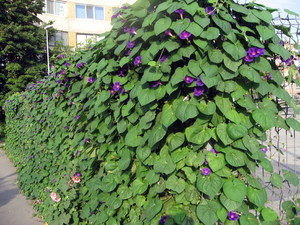 Moonflower. Its decoration is large flowers of milky white color, complemented by the effect of flickering;
Moonflower. Its decoration is large flowers of milky white color, complemented by the effect of flickering;- Tricolor morning glory. Its inflorescences can be white, yellow or blue;
- Purple morning glory. This variety is most often used to decorate the site. The plant has a varied color palette that includes all shades of purple or pink. The inflorescences themselves are not impressive in size, since they are generally medium or small;
- Morning glory blue. The inflorescences of this variety are pure blue in color and large. Can form an excellent composition in combination with a moonflower;
- Kvamoklit. Of the features of the variety, it is worth highlighting the foliage shape, flowers and height that are different from other species.
Ipomoea annual: planting and care
Most suitable for growing morning glory is partly shaded place... If it is planted in a well-lit area, then the flowers will not remain open for long. This does not allow to provide the proper decorative effect when using plants to decorate the territory. If morning glory is grown in conditions of strong shade, then this also does not benefit her, which manifests itself in slowing growth and shrinking flowers.
You can grow flowers by sowing seeds directly into open ground. In this regard, it fully meets expectations, since it demonstrates a high growth rate. At the same time, you can use the seedling growing method. However, certain difficulties are possible here: the seedlings intended for planting in open ground should not be overgrown. Morning glory feels good on almost any soil with the exception of sandy loam.
So that the annual morning glory continues to delight you with its bright flowers, you need to properly care for her:
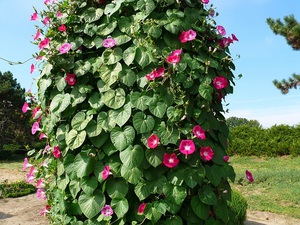 Carrying out regular watering. It is important to remember that stagnant moisture negatively affects plant development. If the groundwater in the selected planting site is too close to the surface, then you will have to first arrange drainage. Then the root system will be protected from getting wet;
Carrying out regular watering. It is important to remember that stagnant moisture negatively affects plant development. If the groundwater in the selected planting site is too close to the surface, then you will have to first arrange drainage. Then the root system will be protected from getting wet;- It is necessary to provide plants with nutrients through the application of fertilizers;
- The presence of support for the green mass is mandatory, which is achieved by using a strong support;
- It is necessary to regularly monitor the condition of the plants and promptly remove damaged stems and leaves;
- Taking proper care of the morning glory is a guarantee that it can make any problematic area in your garden attractive.
Fertilizers and feeding
 Before and during flowering it is necessary to make top dressing in the soil... The greatest effect is provided by the use of suitable fertilizers. In order for the bushes to quickly gain leaf mass, it is recommended to use nitrogen fertilizers, which are applied at the root. Ipomoea also responds well to foliar dressing by spraying with a spray bottle. In order for the plant to bloom as long as possible and retain its decorative properties, it must be provided with phosphorus fertilizers. These dressings can be carried out at different stages of growing morning glory: not only during planting, but also during the development of young seedlings.
Before and during flowering it is necessary to make top dressing in the soil... The greatest effect is provided by the use of suitable fertilizers. In order for the bushes to quickly gain leaf mass, it is recommended to use nitrogen fertilizers, which are applied at the root. Ipomoea also responds well to foliar dressing by spraying with a spray bottle. In order for the plant to bloom as long as possible and retain its decorative properties, it must be provided with phosphorus fertilizers. These dressings can be carried out at different stages of growing morning glory: not only during planting, but also during the development of young seedlings.
Regular fertilization throughout the plant's life cycle allows for a beautiful morning glory. If you want this flower to delight you with lush and beautiful vines and is resistant to disease, then you should, along with other activities, regularly feed.
Plant propagation
Usually new bushes obtained by sowing seeds... This is done in early spring, when the weather is warm outside. The planting site is prepared in the fall, carrying out a deep digging.In the spring, before you start sowing seeds, you can apply long-acting phosphorus fertilizers to the soil.
Avoid burying the seeds too deep in the soil, as otherwise there is a chance that they will not germinate. After the sprouts appear, watering should be carried out regularly. This is easier to do with a sprayer, which will help to avoid washing the seeds out of the soil.
The seeds of perennial morning glory have a high percentage of similarity, and after emergence, the sprouts begin to grow rapidly. In order for the morning glory to enter the flowering phase earlier, the seedling growing method can be used. However, here you need to be especially careful with the choice of the place for transplanting: it must be protected from the wind, each plant will need support.
Diseases and pests
 Pest control is one of the key activities in the care of perennial morning glory. Most often her affects aphids and spider mites... They feed on the sap of stems and leaves. With prolonged activity of pests, the leaves are the first to react to this, which turn yellow and subsequently begin to dry out. If you do not take any measures, then the morning glory soon remains without a single leaf, it stops flowering, and later the bush dries up.
Pest control is one of the key activities in the care of perennial morning glory. Most often her affects aphids and spider mites... They feed on the sap of stems and leaves. With prolonged activity of pests, the leaves are the first to react to this, which turn yellow and subsequently begin to dry out. If you do not take any measures, then the morning glory soon remains without a single leaf, it stops flowering, and later the bush dries up.
To avoid such troubles, it is necessary to regularly inspect the leaves and branches of the morning glory. Then, at the first signs of infection, you can detect pests and begin to fight them.
Good results in the destruction of pests have shown such systemic anti-tick drugs, as:
- Actellik;
- "Fufanon";
- Fitoverm.
To defeat aphids, it is recommended to use the following drugs: "Akarin", "Atkara", "Karbofos".
Conclusion
A person in whose life the summer cottage occupies a large place, undoubtedly, wants it to look as attractive as possible. And for this purpose, many gardeners use various ornamental plants. Among them, the morning glory stands out for its special grace, which can make any site beautiful. Moreover, every owner can grow a perennial morning glory on his own site. You can get strong bushes of this plant by sowing seeds... However, first it will not hurt to prepare a bed for sowing in the fall by adding fertilizer to the soil.
Naturally, in order for a plant to please you with its flowering for more than one season, it needs to be provided with appropriate care. Therefore, you need to constantly monitor the condition of the plants, paying special attention to the signs of the presence of pests. Indeed, in the absence of control over them, soon the morning glory bushes can lose their decorative properties and die.


